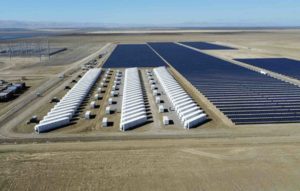Why it’s better to be long on renewables than short
- State targets are in theory bigger drivers of change than the Federal target but tend, especially the Queensland 50% renewable target, to fly under the radar;
- The larger gentailers who own most of the retailer (household and business) market share may tend to have retail emission intensity that exceeds the Federal threshold. We expect to see companies starting to report their retail emissions intensity by the time of this year’s financial results.
- We publish our first guess at electricity market shares by volume.
- We note that Snowy Hydro’s disclosure of information is poor and blame the poor disclosure on the CEO, Paul Broad. Not good enough. Good disclosure is part of ESG. Corporations, especially Govt ones have a privileged role in society and have a duty to explain their performance to stakeholders.
If Queensland and Victoria achieve their targets…
There will be about a 37% reduction in NEM wide emissions by 2030 compared to 2005, or about 118 million tonnes of CO2 compared to 186 mt in 2005. In fact if QLD in particular, sticks to its announced target, then in theory NSW could actually increase emissions.
In practice, the closure of Liddell and likely other NSW power stations will almost certainly see carbon emissions fall in NSW.
So in this sense the State targets, and in particular the QLD target, should get a lot more attention than the Federal target. Number one priority for all those interested in decarbonising Australia is monitoring the progress in announced and electorally proven QLD policy.
26% CO2 reduction in NEM is about 135 Mt

Target equates to about 0.83tCO2/MWh
Under the proposed policy the overall emissions intensity on liable load is about 0.83tCO2/MWh. I.e: basically that’s above even open cycle gas intensity and only a touch below the intensity of modern ultra super critical coal. Total emissions would be even higher if demand does grow.

The 134 MT target is calculated as 26% reduction from the estimate 186 MT of emissions in the NEM in 2005.
When we look at the date from a State perspective for the year ended 28 April what we see is:

State targets if achieved will lead to overall overachievement
Victoria has a renewable energy target of 40% by 2025 and Queensland has a 50% target by 2030.
Assume (and we hate assuming)
- The targets are achieved;
- Renewables are zero emissions;
- Demand is flat;
- The new renewables replace coal then;

- QLD will reduce its emissions by 25mt and Victoria by 13mt. Our table is perhaps overly ambitious in that, particularly in QLD, it needs to be adjusted for behind the meter supply. However the table remains indicative of the over all picture.
- NEM wide emissions will be just 118mtCO2 compared with the Federal Governmenttarget of 134 MT and emissions reduction is 118mt achieved v 186mt in 2005 = 37% reduction.
- NSW would have to do nothing in this case, but the reality is that Liddell and other NSW coal stations are likely to close and that they will not be replaced by coal.
Will Queensland stick to its target?
Prior to the election ,when votes in the South East of Queensland were on the line, the State Government made many fine announcements about its 50% renewable target and also about the facilitating transmission investment in the Powering North Queensland plan.
Since the election nothing has been heard. Given that Queensland does have 1GW of new PV and 0.5GW of new wind on the way, and that the AEMO’s Integrated System Plan is developing new transmission zones, it’s perhaps aggressive to expect to0 many more announcements just yet.
That said, QLD has a lot to do to get to 50% renewables by 2030 and most of the speeches by Dr Anthony Lynham, the QLD Minister for State Development, Natural Resources and Mines, have not dealt with the major road maps for this policy but rather a series of small announcements.
In particular, we think Queenslanders will soon have to more seriously turn their mind to the future of Gladstone power station, one of the oldest in the NEM……
Gentailers
Electricity retailing is dominated by Origin Energy, AGL & EnergyAustrallia.
These 3 companies have approximately 75% of the demand and the customers. The 4thlargest retailer by volume is ERM which has next to none of its own generation and a relatively modest market capitalization compared to the big 3.
The 4thlargest retailer by customer numbers is the now Federally owned Snowy Hydro Corp.
Of the smaller retailers, Simply Energy, with over 600,000 customers is owned by Engie, which also owns the Pelican Point gas generation plant in South Australia
Momentum Energy is owned by Hydro Tasmania and has a strong presence in Tasmania, but is minor elsewhere.
Powershop has a big renewable presence and is owned by one of the major, and part Govt owned, NZ Gentailers.
Rather than focus on retail market shares we are more interested in total volumes.
The following table of market shares uses:
Total volume in the NEM of 190TWh, reduced by 15% for NEG exempt volumes. These are about 15% of total volumes mostly aluminium but also other products and so are about 30 TWh.
AGL reports 14.5 TWh of what are essentially such volumes most of which are its Tomago and Portland smelter contracts.
- Market shares are estimated on the NEG liable volume.
- The listed companies all do a fair job of disclosure. However, little information is disclosed by unlisted companies. It’s the Government owned companies that seem to treat the market and the public with the least amount of respect though.
- We estimated the volumes of other companies listed in the table from customer numbers. Nem-wide average household consumption is 6 MWh but most companies have some business volumes so we adjusted the average up to 7.5 MWh and guessed a split between residential and business.
- We estimated that about 40% of total electricity volume (on a 190 TWh total NEM basis) is residential and business is therefore the balance.
The resulting table looks as follows:

This table is clearly incomplete and subject to lots of revisions. Its version 0.1, we hope to improve it over time. Tasmanian volumes are included in the “others” and NEG excluded sections.
We produce the table for numerous purposes.
One line to look at is that many of the big gentailers, ORG, AGL, EnergyAustralia, ERM and Ergon may potentially have retail emission intensity above the threshold. This is because of historic strategy of covering retail load with RECs but letting industrial customers look after themselves.
A second point of note is EnergyAustralia looks undercooked in market share terms, relative to its generation market share and general aspirations.
A third longer term point is that Ergon is a potentially large asset. Its customers are not very profitable but if Powering NorthQueensland becomes reality its situation might change.
CEO Paul Broa is responsible for Snowy’s poor disclsoure
Snowy Hydro has a poor disclosure record. It’s the 4thlargest retailer in the country by customer, plays a pivotal role in the energy transition and yet its annual report discloses the absolute bare minimum.
Voters and taxpayers in NSW, Federally and Victoria just have to take it on trust that a $6 bn takeover by the Federal Govt is good value for money for both parties. No public information is available about its financial prospects.
The company does not disclose its retail segment volumes, sales or profits. It does not even publish separately the number of electricity customers compared to the number of gas customers.
Snowy is engaged in a major project, already subject to one cost blowout.
In our view it should have results presentations and segment presentations to the same standard as a large public company. It surely is going to be in the public eye a lot more.
David Leitch is principal of ITK. He was formerly a Utility Analyst for leading investment banks over the past 30 years. The views expressed are his own. Please note our new section, Energy Markets, which will include analysis from Leitch on the energy markets and broader energy issues. And also note our live generation widget, and the APVI solar contribution.








